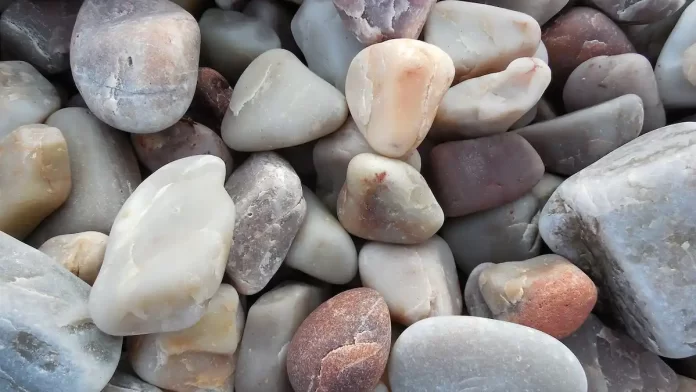The Earth’s crust is a tapestry of diverse rocks, each with its unique origin and formation process.
Among these, primary rocks stand out as a fundamental category, holding valuable clues about the early history and geological evolution of our planet.
In this article, we will delve into the characteristics, types, and significance of primary rocks, shedding light on their essential role in understanding Earth’s past.
Types of Primary Rocks
Primary rocks can be broadly classified into two main types based on their formation location:
Intrusive Igneous Rocks
These rocks are formed from magma that cools and solidifies beneath the Earth’s surface.
As the molten material cools slowly, large crystals have time to form. Common intrusive rocks include granite, diorite, and gabbro.
Granite, with its attractive appearance and durability, is a widely used building material and is often seen in architectural masterpieces.
- Granite: This is a coarse-grained intrusive rock composed mainly of quartz, feldspar, and mica. Granite is widely used in construction, monuments, and countertops due to its durability and attractive appearance.
- Diorite: Diorite is another coarse-grained intrusive rock similar to granite but with fewer quartz crystals and more dark-colored minerals like hornblende and biotite.
- Gabbro: Gabbro is a dark-colored, coarse-grained rock composed mainly of pyroxene, plagioclase feldspar, and sometimes olivine. It is commonly used in construction and as a base material for roads.
Extrusive Igneous Rocks
Extrusive rocks, on the other hand, are formed when lava erupts onto the Earth’s surface and quickly cools.
Due to rapid cooling, extrusive rocks have smaller crystals. Examples of extrusive rocks are basalt, andesite, and pumice.
Basalt is abundant in the Earth’s crust and can be found in many volcanic regions worldwide.
- Basalt: Basalt is one of the most common extrusive rocks on Earth. It has a fine-grained texture and is composed mainly of pyroxene, plagioclase feldspar, and sometimes olivine. Basalt forms the oceanic crust and is abundant in volcanic regions.
- Andesite: Andesite is an intermediate extrusive rock that is often found in volcanic arcs and associated with tectonic plate boundaries. It has a composition between basalt and dacite.
- Pumice: Pumice is a unique extrusive rock that is very lightweight and full of gas bubbles. It forms when frothy lava rapidly cools and solidifies. Due to its porous nature, it floats in water and is often used in horticulture and as an abrasive.
These examples showcase the diversity of primary rocks, both intrusive and extrusive, and their various uses in different applications.
Each rock type has specific characteristics and significance in understanding Earth’s geology and history.
Characteristics of Primary Rocks
Primary rocks, also known as primary igneous rocks, are formed through the solidification of molten magma or lava.
They represent the first stage of rock formation and constitute a critical part of the rock cycle. Their defining characteristics include:
- Igneous Origin: Primary rocks are formed from the cooling and solidification of molten material, either beneath the Earth’s surface (intrusive igneous rocks) or on the surface (extrusive igneous rocks).
- Texture: The texture of primary rocks can range from fine-grained to coarse-grained, depending on the rate of cooling. Rapid cooling on the Earth’s surface results in small crystals (fine-grained), whereas slow cooling beneath the surface leads to larger crystals (coarse-grained).
- Mineral Composition: Primary rocks primarily consist of mineral crystals. The dominant minerals are feldspars, quartz, micas, and various ferromagnesian minerals like pyroxene and olivine.
- Unstratified Nature: Unlike sedimentary rocks, primary rocks lack a layered or stratified structure. They are uniform in composition and typically massive.
- Lack of Fossils: Since primary rocks originate from molten material, they do not contain any fossils. Fossils are typically found in sedimentary rocks, which form through the accumulation of organic remains.
Significance of Primary Rocks
Primary rocks play a crucial role in geology and have several significant implications:
- Earth’s History: Primary rocks provide valuable insights into the Earth’s early history. By studying the composition, texture, and age of these rocks, geologists can unravel the geological events that shaped our planet.
- Plate Tectonics: The distribution of primary rocks around the world helps us understand plate tectonics and the movement of the Earth’s lithospheric plates. This knowledge is vital for understanding earthquakes, volcanic activity, and mountain formation.
- Mineral Resources: Primary rocks often contain valuable mineral deposits such as gold, copper, iron, and various gemstones. Economic geologists study these rocks to identify potential mineral resources for extraction.
- Volcanic Hazard Assessment: Studying extrusive primary rocks can help assess volcanic hazards and potential eruption styles. Understanding the characteristics of different types of lava can aid in predicting the behavior of future volcanic eruptions.
- Engineering and Construction: The properties of primary rocks, particularly intrusive rocks like granite, make them highly suitable for construction purposes. They are used as building materials, monuments, and sculptures due to their durability and aesthetic appeal.
In conclusion, primary rocks are a vital piece of the Earth’s geological puzzle. Their formation from molten material provides a unique window into the early history of our planet and the processes that have shaped it over millions of years.
By studying these rocks, we gain a deeper understanding of the Earth’s past, present, and future, making primary rocks an essential subject of study for geologists and researchers worldwide.
